This article comes to us from one of our US Raiders, Scott Hendrickson.
So given the release of the epic ACW range, a couple of us started discussing how to really show off just how “epic” a convention battle could be. Although the ACW is not my first love of time periods, I was way too easily convinced to take this project on. Even though I do like a good historical refight, given the short time periods for sessions at US conventions I decided to throw a little alternative history at our players.
Before such a project could have begun, a great team was essential, a group committed to the project with the focus on the most important part of your game event: the people that sign up to play and enjoy. In this, I am happy to send out some props to this group William Monterosso, Jon Russell and Charlie Torok our MilleniumCon game coordinator. Each has brought a lot of great insights, connections to sources for troops and material and years of experience putting on games. Many thanks to all of you.
So we began this journey by picking the battlefield that our players will fight on; we wanted to find a challenging, unique location that would push players into making real tactical and operational decisions rather than just following the historical course of the battle or that of the retrospective view of historians. So my decision was to take 2 Civil War armies and put them onto another battlefield. We looked at dozens of potential battles for closely matched forces and then battlefields across history to give our players a fresh look at the application of ACW tactics on the tabletop. After a bit of searching I decided on taking the armies from the battle of Shiloh and putting them on another surprise attack battlefield, that of Leuthen from the Seven Years War.
Next, we began the twin tasks of gathering the forces and reviewing the chosen battlefield. In getting troops to the battlefield we had good luck in that we had a number of people that were already hard at work with their starter boxes and were happy to loan out their collections for the game. On the battlefield front, it was cataloguing what we had, what we needed and who could make it.
As those facets started to come together William and I started wargaming different areas of the battlefield at our respective LGS, looking at how the terrain would affect the gamers’ decisions and flow of the battle, making tweaks where we found it to be disruptive, and as this is a surprise attack scenario, we needed to try out different objective placement to balance the effects of surprise with survivability for the players.
Thankfully as it turned out we were far enough ahead of schedule to have multiple contingency plans, just as no battle plan survives first contact with the enemy, no convention game goes off as planned. We were still able to provide the forces needed despite tardy commission painting and illness slowing down the painting. The biggest curveball came at the opening of the convention, as we noticed that where we were in the main dealer area as a showcase game was not situated for our unique table layout. Necessity being the mother of invention, Leuthen became Leuthenville complete with an impassible mini-mountain in the centre.
We also addressed the convention risk of players getting knocked out too early… with 2 of the Unions 6 divisions taking it right on the chin early, and knowing we had a second group taking over halfway through, we adjusted the brigade morale rules in Black Powder. We decided one change was that the brigade is still the manoeuvre unit, but the division is the “break” formation… this would allow formations to stay in the fight longer.
To the battle itself:
The Union first, second and third divisions were deployed in a semi-circle around the perimeter, the fourth in reserve. The final two divisions we still on the march to the encampment and were expected throughout the morning. To simulate some measure of surprise all union batteries started unlimbered except one in the first division and all regiments started in column with a minus 2 on the first turn command rolls. The confederate plan was to use the first and second corps (a bit larger, but not much more than the Union divisions) to hammer the enemy to the front, while the third corps would follow close behind on a later turn (turn two as it turned out) to either pin the union third division or attack an open flank.
Quick rundown of the flow of the morning session, the confederate first corps had one division dawdle toward its target (one brigade failed its move, the second getting 1 move) while the second division moved swiftly into contact, in the resulting fight on that flank of the line the union first was hammered slowly falling back on the fourth division that was coming up in support. The flank would have broken and crumpled almost immediately if not for 1 battery and 2 union regiments holding a fence line on top of a small hill. The steadfastness of that small force saved the union first division, which at the morning sessions end (day one of our battle) was only 1 regiment away from the divisional breakpoint.
In the second division’s sector, the rebels were very hesitant at the start, failing several command rolls over the first few turns. This allowed the union division to put itself into battle order. However, after that they were battered by the corps in front of them. Compounding that the second division commander made a reputation for saving throw futility in the early stages. The division was pushed back all the way to the edge of the mountain by the end of the day and on the verge of breaking with the rebels suffering few losses.
The union third division and the confederate reserve corps basically skirmished with one another, neither side making much progress although the union troops did take more damage in a rather desultory exchange.
The second session saw some casualties removed overnight, and a couple whupped regiments back in the line (although damaged). The union first and fourth divisions switched places and well as the second and the fifth.
More fighting in the later stages just resulted in more losses without any change to the larger battlefield.
Epic scale gives a great look to the battlefield and Glory Hallelujah! gives you the ability to bring a really large game to life quickly and in easy-to-teach mechanics for new gamers. In our games, we have found that the sweet spot for us in terms of unit size in stands is 1,2,3,4. It also takes some record-keeping in that the number of stands represents the number of base shots and stamina.
Inspired?
The Epic Battles system allows for gamers to refight these battles on a huge scale. The game is based on the familiar award-winning Black Powder rules system, with a few period-flavour tweaks to cement the battles in the ideologies of American Civil War doctrines.
The starter box set contains no less than 2400 men. Each of the two armies are presented on colour-coded plastic sprues; the push-fit pieces are extremely easy to assemble – enabling you to quickly get to the business of gaming this fascinating era of history on the epic scale it deserves. You’ll also find some MDF scenery to lend your battles extra authenticity.
For a limited time, get a free Dismounted Cavalry Box when you order the Epic Battles: American Civil War Start Set!
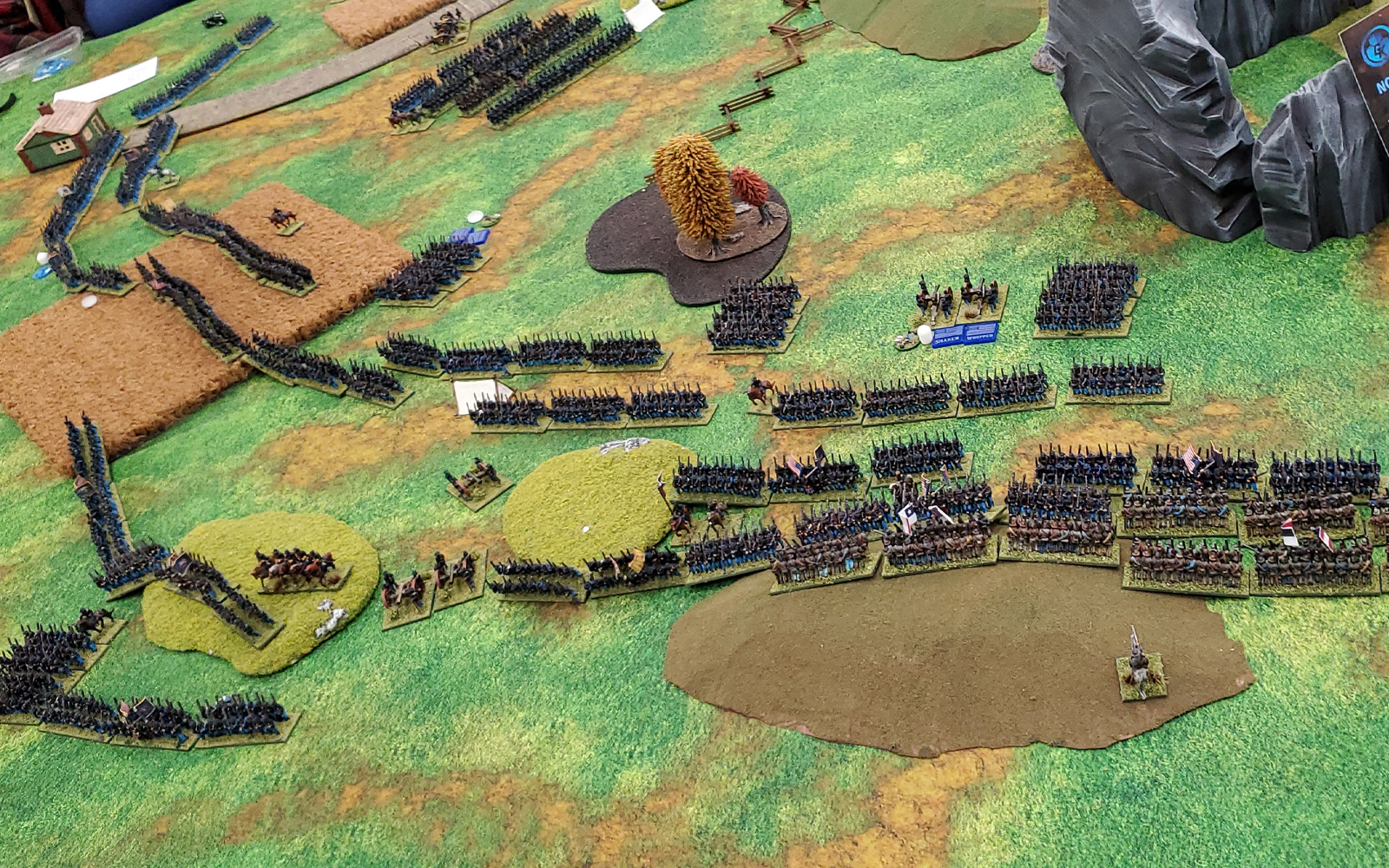
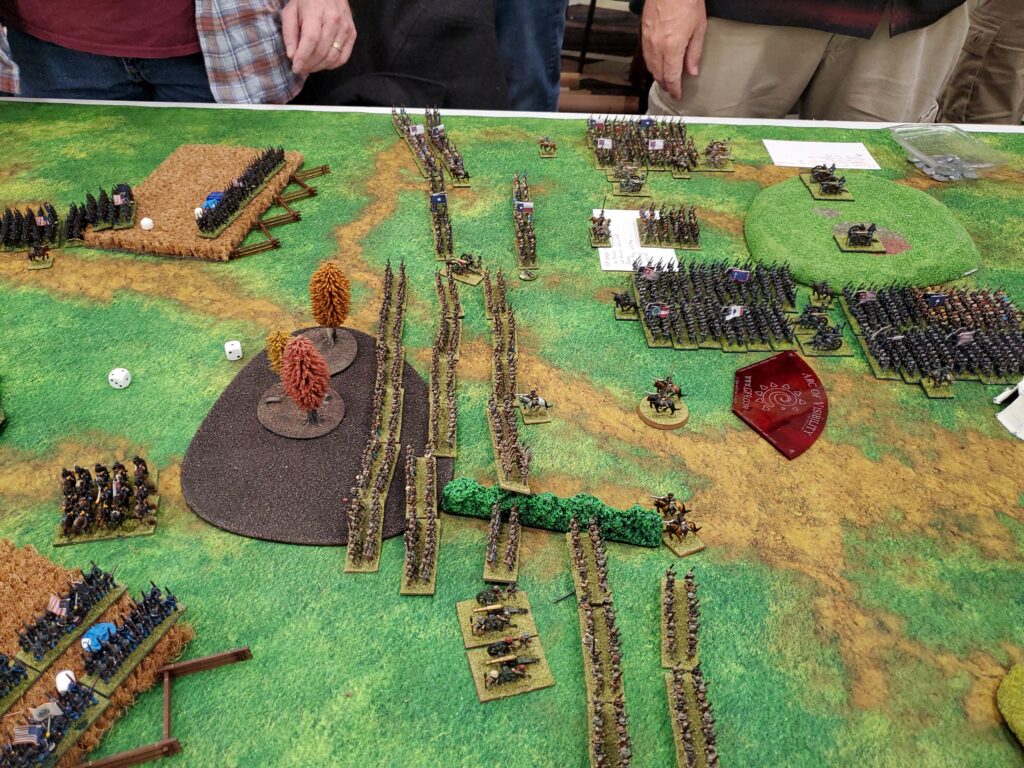
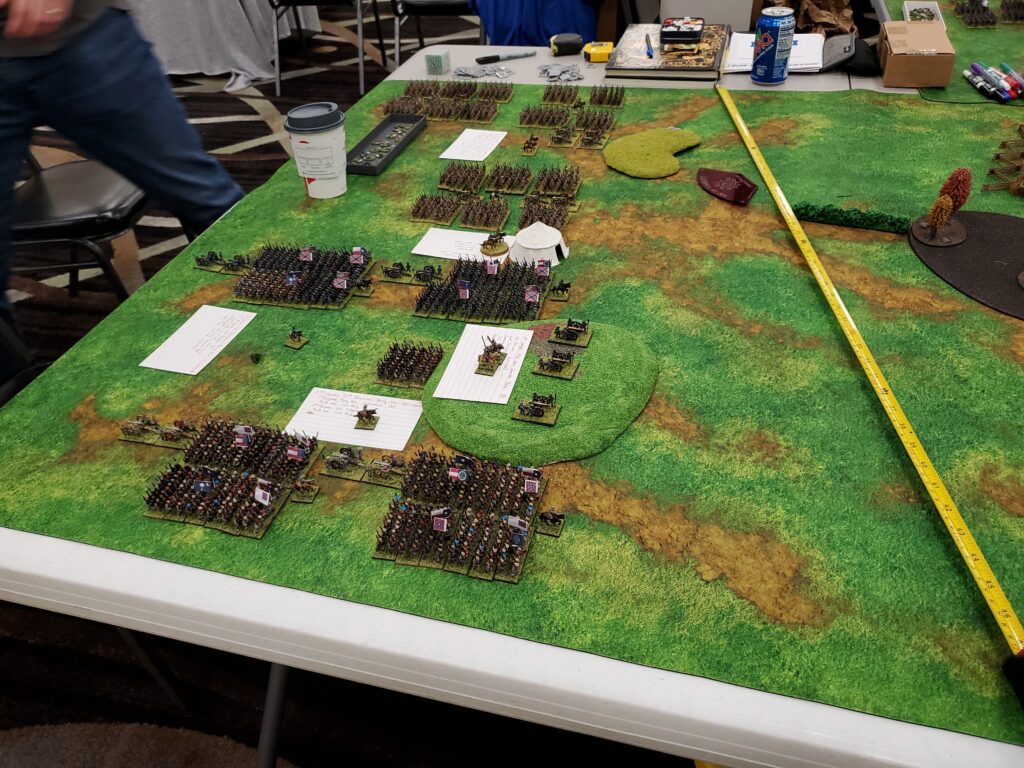
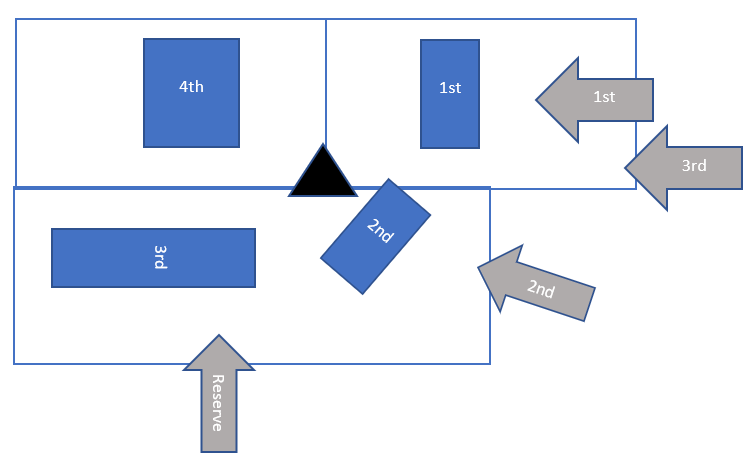
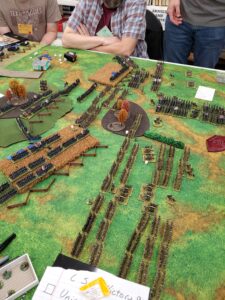
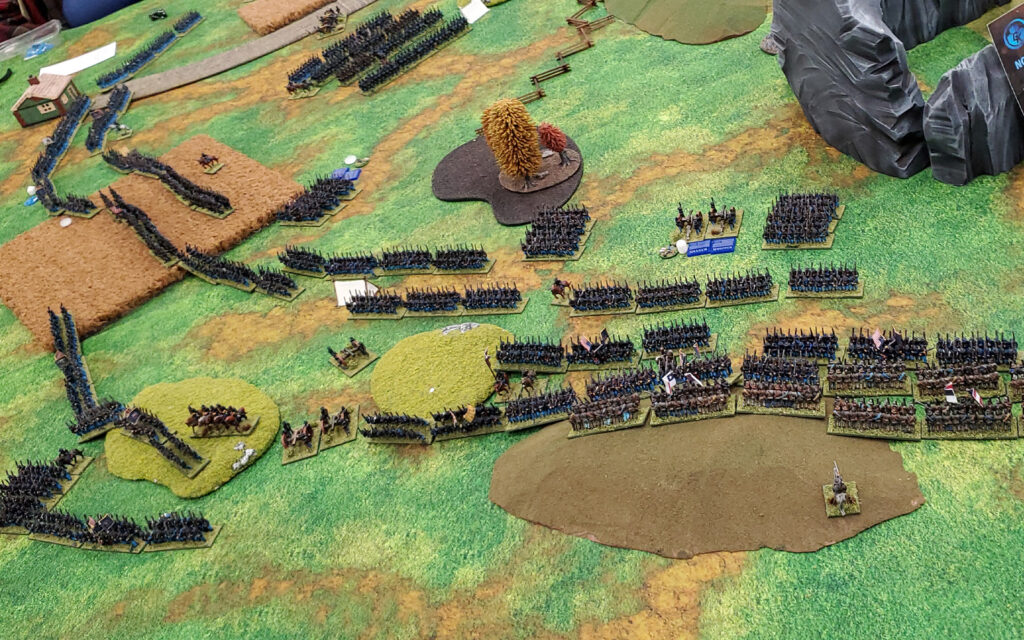
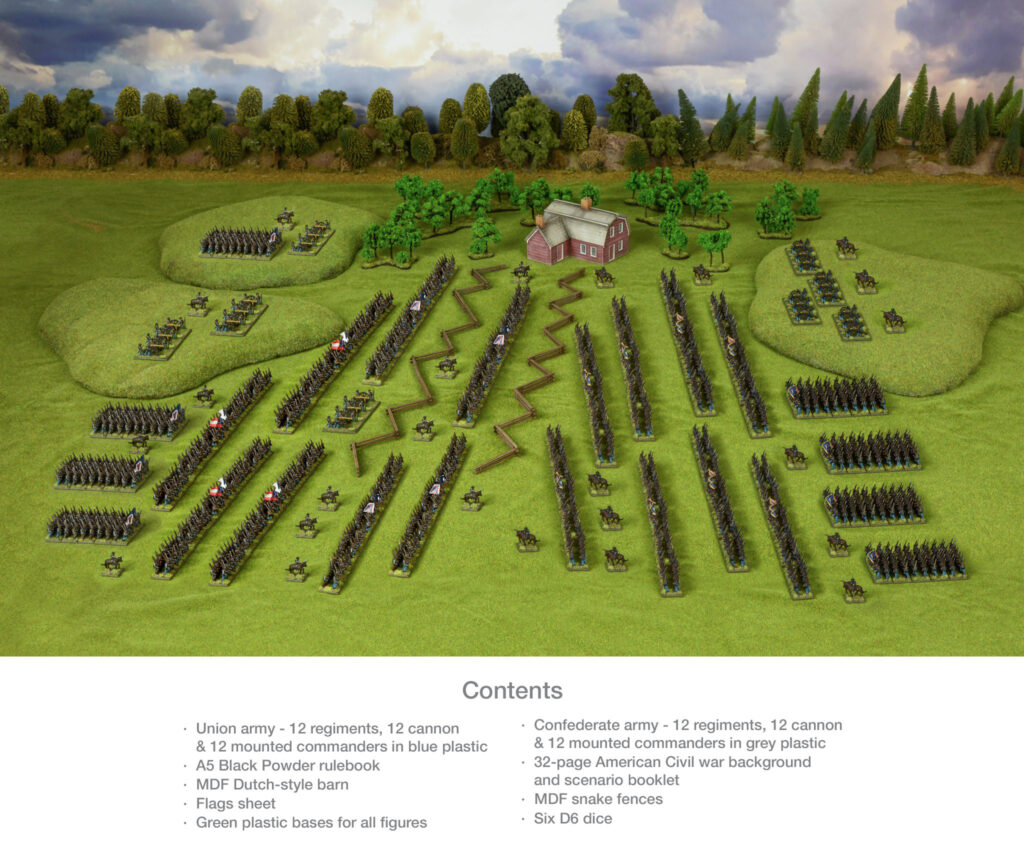
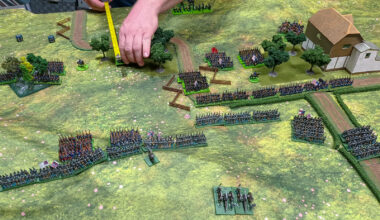
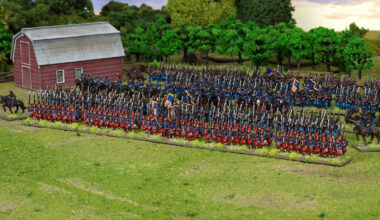
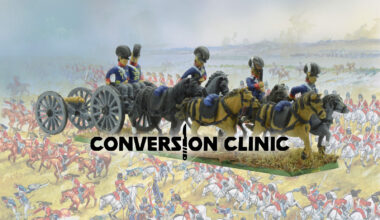
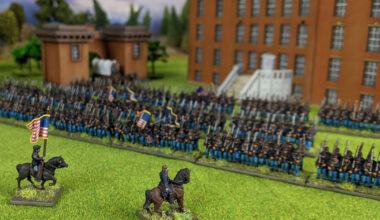
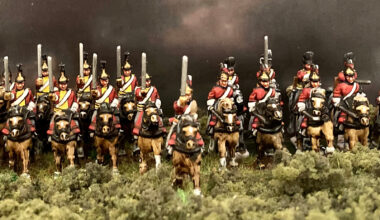
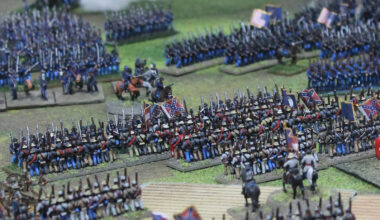
1 comment
Very impressive looking game, but drinks on the gaming table? Come on chaps!
Comments are closed.